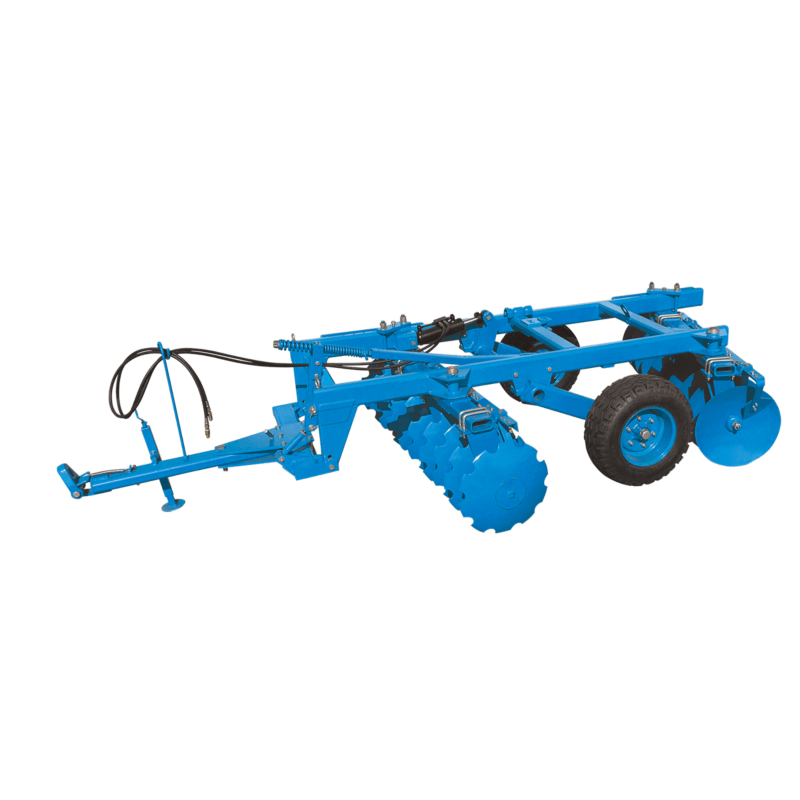
The agricultural industry is at the heart of global food production, but modern farming is increasingly dependent on advanced machinery. The development of Mounted Bottow Plow has significantly transformed farming practices, improving productivity, efficiency, and sustainability. However, this progress is not without its challenges. From meeting the demands of a growing global population to addressing environmental concerns, agricultural machinery developers are navigating a landscape filled with both obstacles and opportunities.
Challenges in Agricultural Machinery Development
One of the primary challenges facing the development of agricultural machinery is the need for high performance under diverse and often challenging field conditions. Farmers in different parts of the world deal with varying soil types, climate conditions, and terrain. A machine that works well in one location may be ineffective in another, requiring machinery developers to create versatile, adaptable machines. This diversity complicates the design and manufacturing process and demands significant innovation to ensure that agricultural equipment meets the specific needs of farmers worldwide.
Another major challenge is the cost of advanced agricultural machinery. While modern machines offer increased efficiency, they come with a hefty price tag. Small-scale farmers, especially in developing countries, often struggle to afford the latest equipment, which limits their ability to maximize productivity. While mechanization can reduce the labor costs associated with farming, the upfront investment in machinery remains a significant barrier. Additionally, the ongoing costs of maintenance, repairs, and fuel consumption can be burdensome.
Sustainability is another significant concern. Agricultural machinery development must align with the growing push for environmentally friendly farming practices. Traditional agricultural equipment often relies on fossil fuels, contributing to greenhouse gas emissions and environmental degradation. As concerns about climate change and soil health intensify, the need for machines that reduce emissions, conserve water, and minimize soil compaction is increasingly important. Designers must balance technological advancements with environmental responsibility, a delicate task that involves incorporating sustainable materials and developing energy-efficient systems.
Innovations in Agricultural Machinery Development
Despite these challenges, the agricultural machinery sector has seen remarkable innovations that address both existing and emerging issues. One of the most notable advancements is the rise of automation and precision farming. GPS technology, remote sensing, and machine learning have enabled the creation of self-driving tractors, harvesters, and planters that can operate autonomously. These innovations allow farmers to optimize field operations, reduce waste, and increase yield while minimizing the need for manual labor.
The integration of artificial intelligence (AI) and data analytics into agricultural machinery has also revolutionized farm management. These technologies enable farmers to collect and analyze vast amounts of data on soil conditions, crop health, and weather patterns. By using this data, machines can make real-time decisions, adjusting operations to optimize performance. For example, AI-driven tractors can adjust planting depth and seed spacing based on soil conditions, resulting in higher crop yields and better resource management.
Electric and hybrid-powered machinery is another breakthrough in the industry. These machines are designed to reduce the reliance on fossil fuels, lower emissions, and decrease fuel costs for farmers. Companies are investing in battery technology and fuel cell systems to create electric versions of traditional farm equipment like tractors and combines. While still in the early stages of adoption, these technologies offer significant promise in reducing the carbon footprint of agriculture.
Finally, advancements in robotics are beginning to take root in agricultural machinery. Robots equipped with sensors and cameras can now perform tasks such as weeding, pruning, and harvesting. These machines not only reduce the labor burden but also enable more precise, targeted interventions that reduce pesticide use and minimize environmental harm.
Conclusion
The development of agricultural machinery faces numerous challenges, from adapting to diverse farming conditions to addressing environmental concerns and affordability. However, innovations in automation, precision farming, electric power, and robotics are paving the way for a more sustainable and efficient future. As technology continues to evolve, the agricultural machinery sector will play a crucial role in meeting the demands of a growing global population while minimizing its environmental impact.
